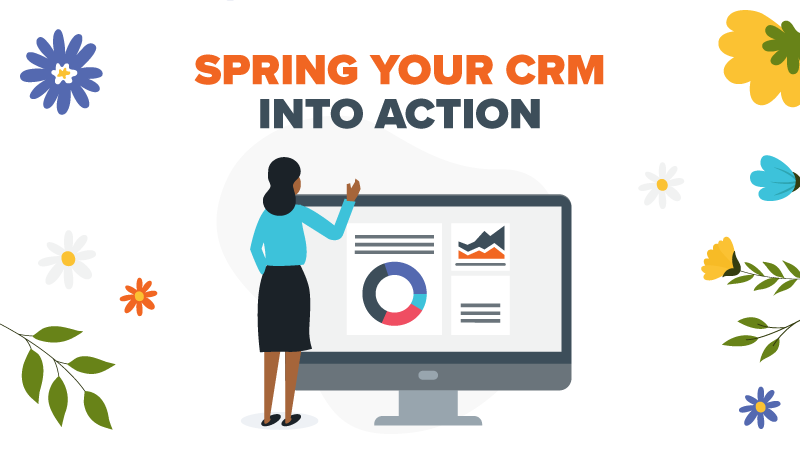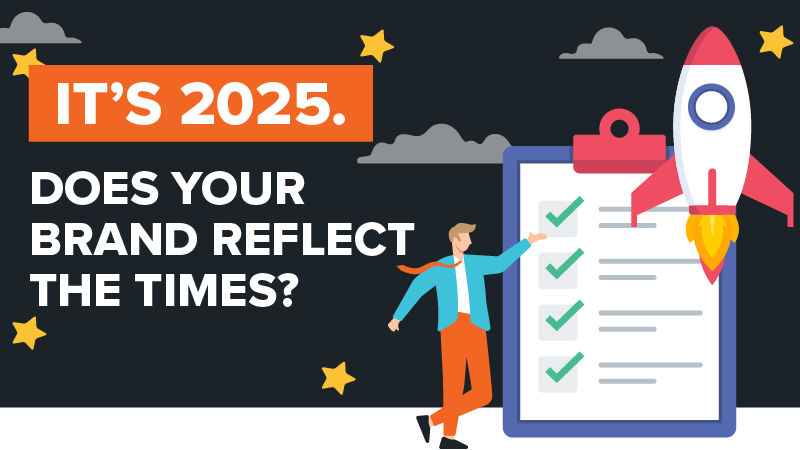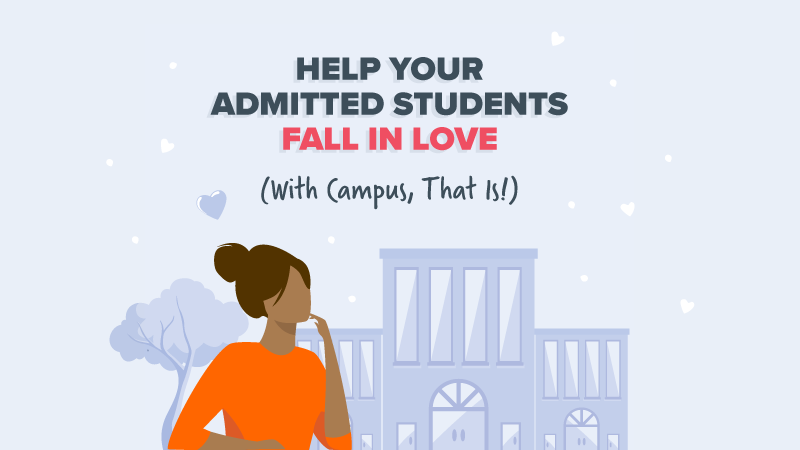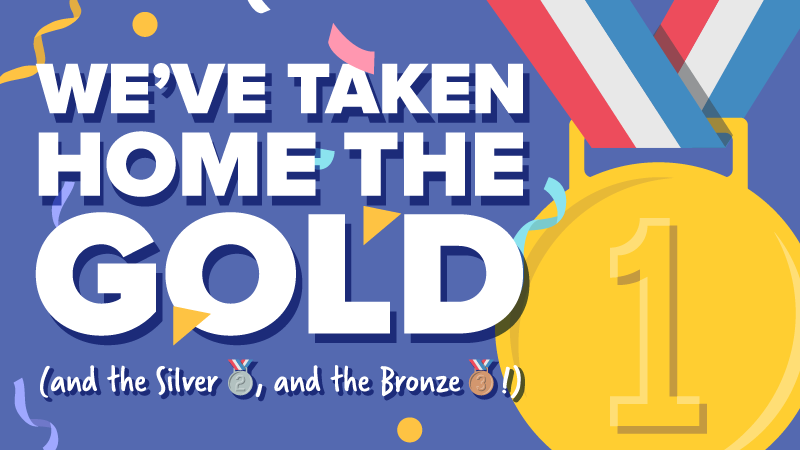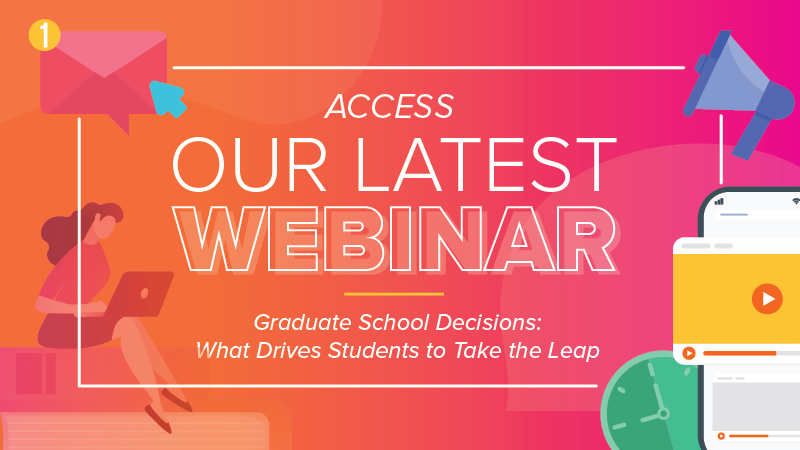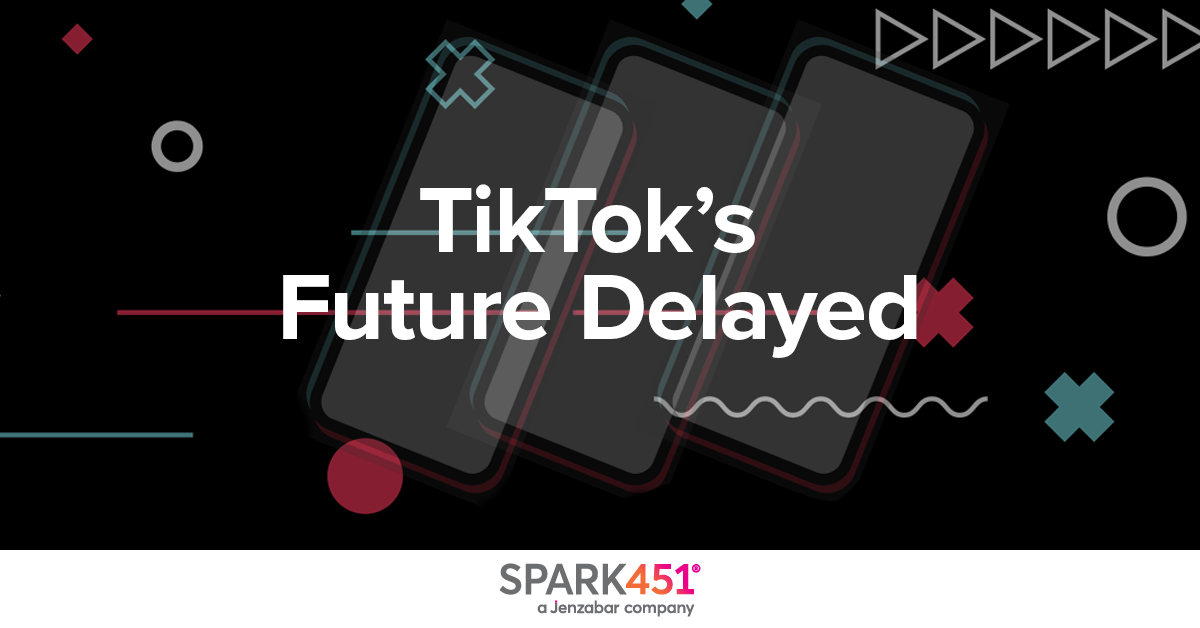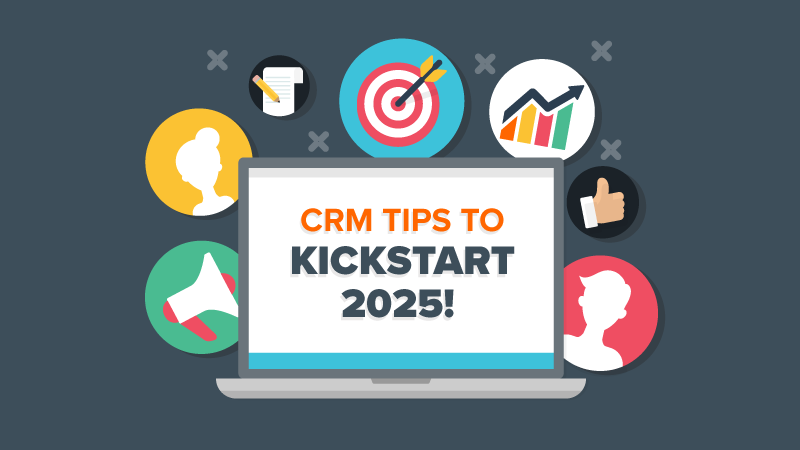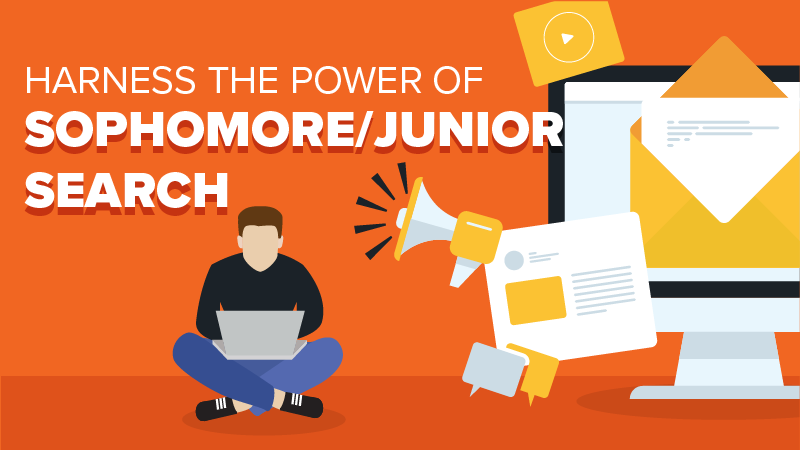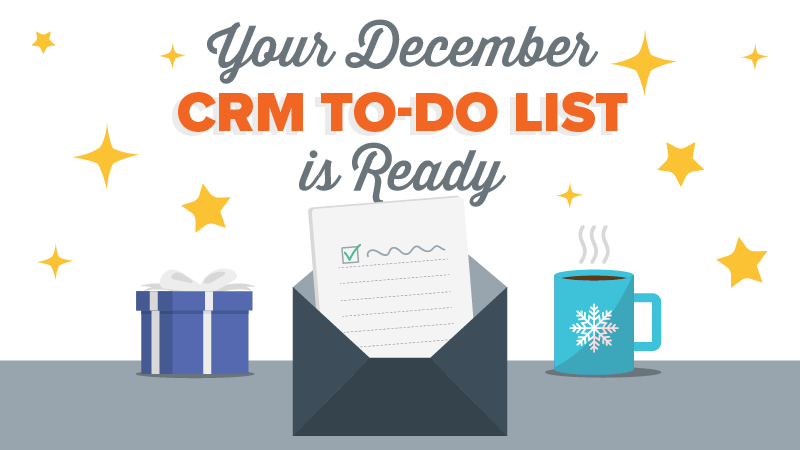Cultivating a Class Through Events
The spring is a busy time in the admissions event world, with calendars filled with admitted student days, open houses, spring break weeks, financial aid workshops, and more. Trying to stay in front of several different audiences, at different funnel stages, is not easy — all while external factors are complicating an already busy time of the year.
Having worked on campus in an admissions office for 15 years, I remember feeling the importance of those admitted student days, the drive to get deposits, to help students make their final choice. In our most recent College-Bound Student and Parent Surveys, we had some interesting findings:
28%
of students knew they had found the right school after their first visit.
25%
of parents knew an institution was the “right fit” for their student when they first visited.
38%
of students visited campus before applying.
Top 5
Both students and parents listed “campus appearance” in their top 5 enrollment decision drivers.
Visits are a powerful tool — this is not breaking news. What can get lost in the spring shuffle, though, are those first-time visitors. As we can see from our surveys, that first impression can be very powerful. Students who have visited will move through the funnel at a higher rate, and ultimately, be more likely to enroll.
Students who are visiting your campus want to connect with your institution. Prioritization — choosing how and when to spend resources to have the most impact on the right students — can be a challenge. A tool like Spark451’s Predictive Model can help use data, including campus visit and engagement metrics, to help you prioritize. Our predictive model analyzes several data points and segments students into categories with likelihood to enroll. In addition, Spark451 will identify student clusters that share common attributes, which can lead to new recruitment opportunities and segmentation.
Here are four ways to help optimize campus events:
All Are Welcome
Using a visit call-to-action is vital at every stage of the funnel. Make it clear that you want students and their families to visit you anytime that they are ready. If you have events geared toward specific audiences, make sure to clearly define that in your communication plan, and be purposeful in your messaging. Developing parent communication plans specific to events is also a great idea and something Spark451 is well-versed in, should you need assistance.
Impactful Experiences
Remember the audience you are catering to and what steps you want them to take when they leave campus. For a spring open house, that may be filling out an application five months later, so how will you make sure they are ready to do that via targeted communications after their visit?
Incentivizing the Campus Visit
The visit incentive is becoming more prevalent at colleges and universities. From keychains to laptops, we have seen it all. But it is important to remember what you are trying to accomplish with these incentives. Are you looking to improve attendance, or looking to help your yield? Clearly outlining your goals for the event can help you determine not only if an incentive is appropriate, but also, if it is the right one to help you accomplish those goals.
Be Adaptable
Remember to be flexible, think outside the box, and make sure you are providing sessions that will be important to students and families. For example, not offering financial aid appointments last year, but instead offering large-scale financial aid Q&A opportunities at an admitted student day, when you know families will have a lot of the same questions. Always be true to who you are as an institution, but remember to have fun and be open to trying something new!
As always, remember we are here to assist and partner with you! Spark451 is positioned to help you create impactful and meaningful experiences with students and families, while achieving your goals. Reach out to us to strategize today!
Spring Your CRM Into Action
With spring visits, spring break, decision letter prep and releases, and the ever-present pressure of May 1 looming, March is anything but calm in the world of admissions. That’s why it’s so important that your events are properly set up and organized, payments are being collected, academic advisor calendar integrations are functioning, and checklists are being implemented. Whew, that’s a long list.
Thankfully, we know your pain points and are here to help with tips and tricks to set your office up for success in the coming weeks — no special luck required! 🍀
Decision Releases & Admitted Student Comms
Oh, decision releases… Few things are more stressful or take more time to get right. Whether it’s striking the precise note of empathy in denial or waitlist messages, or putting together a celebratory admit package, it takes a whole lot of work. To help ensure you’re getting the reactions you’re hoping for, leverage personalization at every step! Tailor your messages to reflect each student’s journey and achievements. Little details like including their intended major, calling out their interests, or noting something from their application essay that stood out to you, can go such a long way.
Carry that personalization through customized checklists and utilize segmentation to make sure students are only receiving information relevant to them (events included!).
Slate Pro Tip: Utilize the Admitted Student Checklist and set up your portal, so students can easily upload their required documents. Anything you can do to make the process easier is a win!
Spring & Summer Visits
With spring and summer comes the natural influx of on-campus visitors! Are you ready? Make sure your events are updated and all associated communications (invitations, reminders, instructions, confirmations, etc.) are crafted and automated to perfection.
How? Start with—you guessed it—personalization! Use your CRM to track student interests and tailor their visit experience accordingly. If a student is interested in a particular major, arrange for them to meet with faculty or attend a class. Did they list specific clubs or activities they want to pursue? Show them those meeting spaces and introduce them to current members! Also, don’t overlook the importance of following up with students and families after their visit. Setting up your CRM to automatically send out post-visit surveys not only provides another touch point, but the feedback you’ll gather will also be critical for refining and enhancing future events. Surveys can be built in your CRM or in other platforms like Qualtrics. If you don’t know where to start, ask us how! Remember, the hard work you put in now leads to stellar anti-melt initiatives later.
Last but certainly not least, try rethinking how you and your team interact with students and families. Instead of asking generic questions, inquire about the students’ interests, career goals, or what they’re most looking forward to about college. Doing so not only helps foster more meaningful connections, but it will also help you stand out in their memory.
Slate Pro Tip: Did you know that you can customize which fields are displayed internally on a form response? Here’s how: Edit Form → Edit Properties → Custom List Fields → Select Your Fields. Consider adding things like student major, state, status, or any other field that would be useful!
May 1 Prep
Let’s be real—getting students to confirm their enrollment and pay their deposits can take some serious work. Help ease the burden on your team by keeping the following in mind:
- It’s easy to forget that not everyone knows what we mean when we say “enrollment deposit.” Let’s make sure it’s clear from the get-go by using plain language to explain what it is and why it’s important.
- Make sure you provide easy, step-by-step instructions on how and where to submit deposits and required paperwork.
- Take an omnichannel approach to May 1 reminders and leverage key dates as the deadline approaches. Think countdown emails and texts, phone calls, or even IG Live Q&A sessions!
We’re Here to Help
At Spark451, we understand that admissions teams are spread thinner than ever, and that you may need a helping hand in order to implement new tactics or approaches. That’s where our flexible SparkAssist service comes in, whether you want to learn with us to become an expert on all things Slate, Salesforce, or Element451, or hand us a project for onetime completion. No project is too big or too small. If you’re interested in learning more, please reach out to us!
It’s 2025. Does Your Brand Reflect the Times?
In today’s world of Instagram filters, AI-generated content, and near-constant consumption of media, it’s more important than ever to pause and assess whether or not your brand is cutting through the noise and resonating with your target audiences.
And we’re not just talking about Gen Z and prospective students. Your brand plays a critical role in every business goal, from student recruitment and constituent engagement to reputation management, fundraising, and more.
Branding is also more than just your logo and tagline — it’s so much deeper and goes well beyond simple aesthetics. Your brand encompasses the entire experience associated with your institution, and represents a promise of what will be delivered.
But without taking the time to assess your current brand, how can you be confident in its effectiveness? That’s where Spark451’s Brand Strategy services come in.
By taking a deep dive into every facet of your brand, from colors and typography to photos and graphic assets, we can help you:
- Define and refine your school’s unique voice
- Amplify your presence in the market
- Ensure you leave a lasting impression with every interaction
If you’re ready to harness the full power of branding, reach out to us today. We’d be happy to discuss your needs and how Spark451 can help you reach your goals.
Help Your Admitted Students Fall in Love
The month of February is synonymous with love, so what better way to spend the coming weeks than leveraging your CRM to help your admitted students fall in love with your college and say “yes!” to joining you this fall.
Leverage Point 1: Personalization
With application reading complete, it’s time to gear up for admitted student events! 🎉 We all know how critical getting students on campus is to securing deposits, so you’ll want to pull out all the stops when planning your admitted student days — including in your communications! Show your students that you care (and are paying attention!) by creating hyper-personalized messages leveraging dynamic content and/or Liquid markup. By utilizing dynamic content, you can create a single mailing that displays different, personalized information for each student on everything from their major and athletic interests to their advisor and academic school.
Pro Tip: Personalization can (and should!) go beyond email. Slate portals can leverage Liquid markup, so be sure to take full advantage of this powerful tool.
Leverage Point 2: Financial Aid Packages
It can easily be argued that nothing is more important to students and their families than the financial aid package. In addition to sending packages digitally (more on that here), consider importing key financial aid information to display on student records. Doing so will allow your admission counselors to have more meaningful conversations with students and further solidify the relationships they’ve been building.
Leverage Point 3: Automate, Automate, Automate
Make life easier for yourself, your counselors, and your admitted students by taking full advantage of your CRM’s workflow automations. Whether it’s on-campus orientation, program-specific visit days, or new student arrival, set up your events to send triggered reminders and follow-up communications. Your counselors will love having one less thing on their to-do lists, and students and their families will appreciate being kept in the loop as their event approaches.
Pro Tip: Consider attaching (or linking to) a campus map with directions to the location of the event.
Leverage Point 4: Campus Camps
Do you know what’s just as important as getting current admitted students to fall in love with campus? Planting the seeds for future classes. If your campus hosts summer camps (or any camps for that matter), you have a prime opportunity to get new names into your system! Include opt-in language on registration forms or try to work an admissions presentation into the camps’ schedules. No matter how you go about it, make sure those names end up in your database and added to your nurture campaigns.
Pro Tip: As part of camp check-in, consider providing attendees with a QR code that links to your inquiry form. It’s an easy way to get those names in the system!
We’re Here to Help
At Spark451, we understand that admissions teams are spread thinner than ever and that you may need a helping hand in order to implement new tactics or approaches. That’s where our flexible SparkAssist service comes in. Whether you want to learn with us to become an expert on all things Salesforce, Slate, or Element451, or hand us a project for one-time completion, you can. No project is too big or too small, including:
- Drip campaigns development and automation
- Responsive HTML email templates
- Querying and reporting
- Database efficiencies
- Lead generation and strategizing origin sources
If you’re interested in learning more, please reach out to us!
Spark451 Takes Home the Gold (and the Silver, and the Bronze!)
WESTBURY, NEW YORK — Higher education marketing firm Spark451, a Jenzabar company, is excited to announce that 15 of their recent marketing projects — launched in cooperation with their valued partner institutions — have received recognition at the 12th Annual Education Digital Marketing Awards, an esteemed competition recognizing excellence in education marketing.
“Receiving these awards is so much more than an accolade to us — it’s further evidence of the critical role creativity plays in producing high-performing work,” says Irene Scala, Executive Creative Director at Spark451. “We could not be more honored to have the chance to work with partners who trust us and our team of experts so thoroughly and, as a result, allow us to put forth work that is not only inspiring, but achieving remarkable results.”
This year’s winners include:
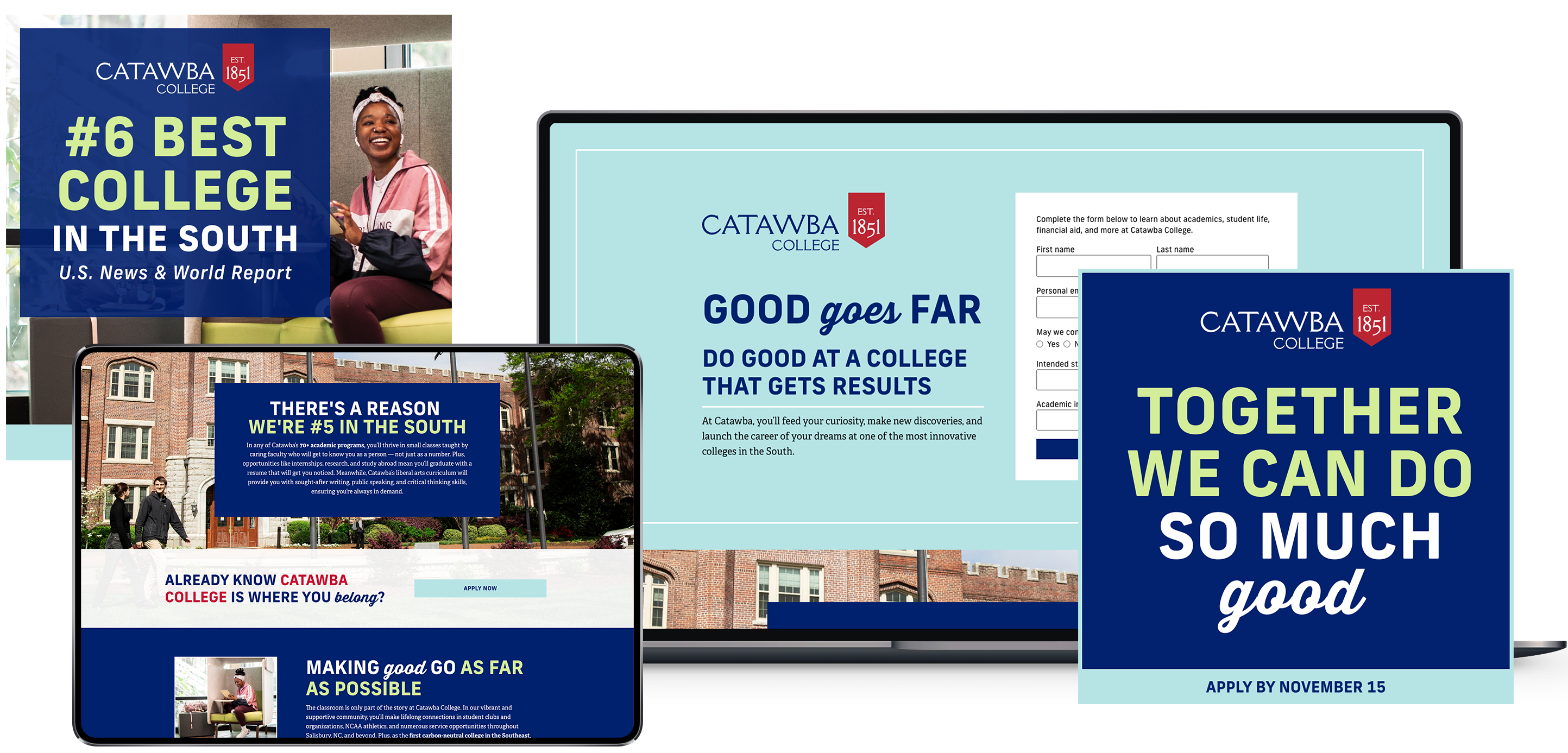
Catawba College
Entry Win: Gold
Entry Title: Recruitment Campaign
Category: Social Media Content – Campaign
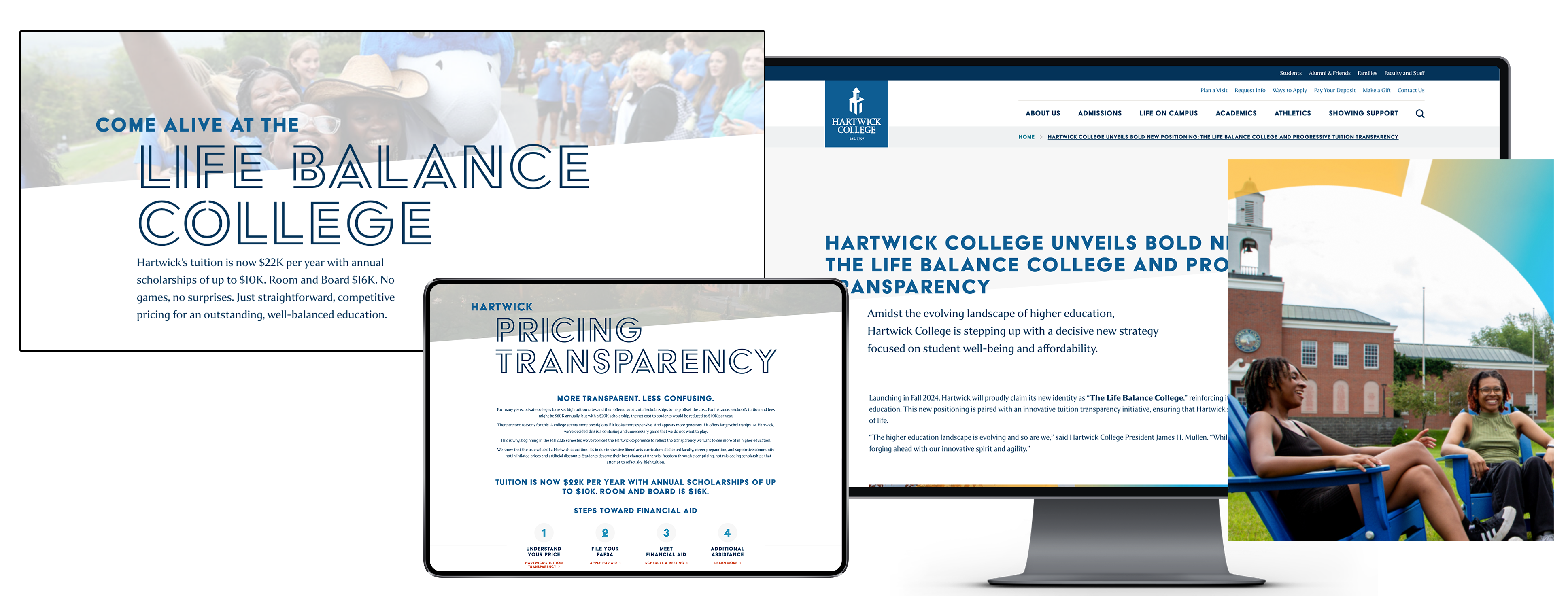
Hartwick College
Entry Win: Gold
Entry Title: Website Design Adjustment & New Market Position
Category: Institutional Website – Update/Refresh

Indiana State University
Entry Win: Gold
Entry Title: Social Media Campaign
Category: Digital Advertising
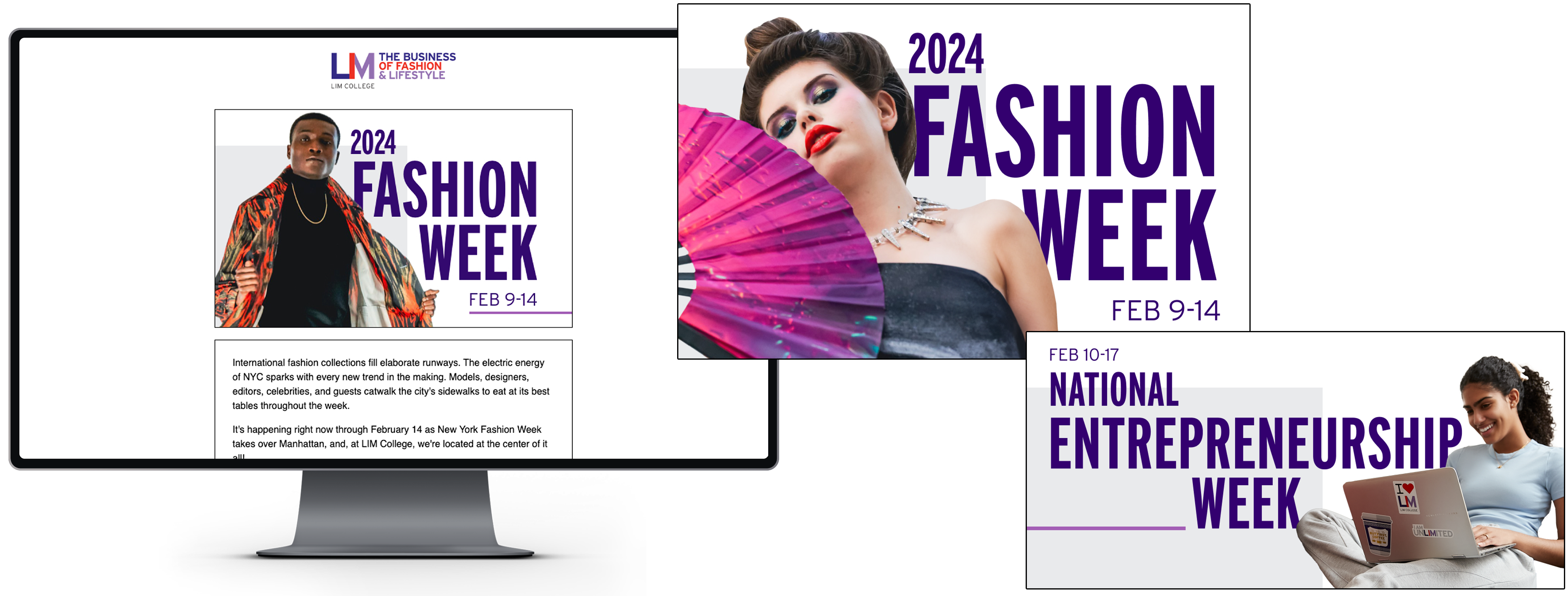
LIM College
Entry Win: Gold
Entry Title: Fashion Week Email Template
Category: Email: Single or Multiple Campaign
Manhattan University
Entry Win: Gold
Entry Title: Video
Category: Digital Special Video: Over 2 Minutes
Mount Saint Mary College
Entry Win: Gold
Entry Title: Branding Campaign
Category: Digital Advertising
New York University
Entry Win: Gold
Entry Title: Storytelling Summit Presentation
Category: Miscellaneous Interactive Media
Cornell University
Entry Win: Silver
Entry Title: Cornell University Industrial & Labor Relations School
Category: Digital Special Video: Under 2 Minutes
New York University
Entry Win: Silver
Entry Title: NYU College of Global Public Health YouTube Ad
Category: Social Media Content – Single
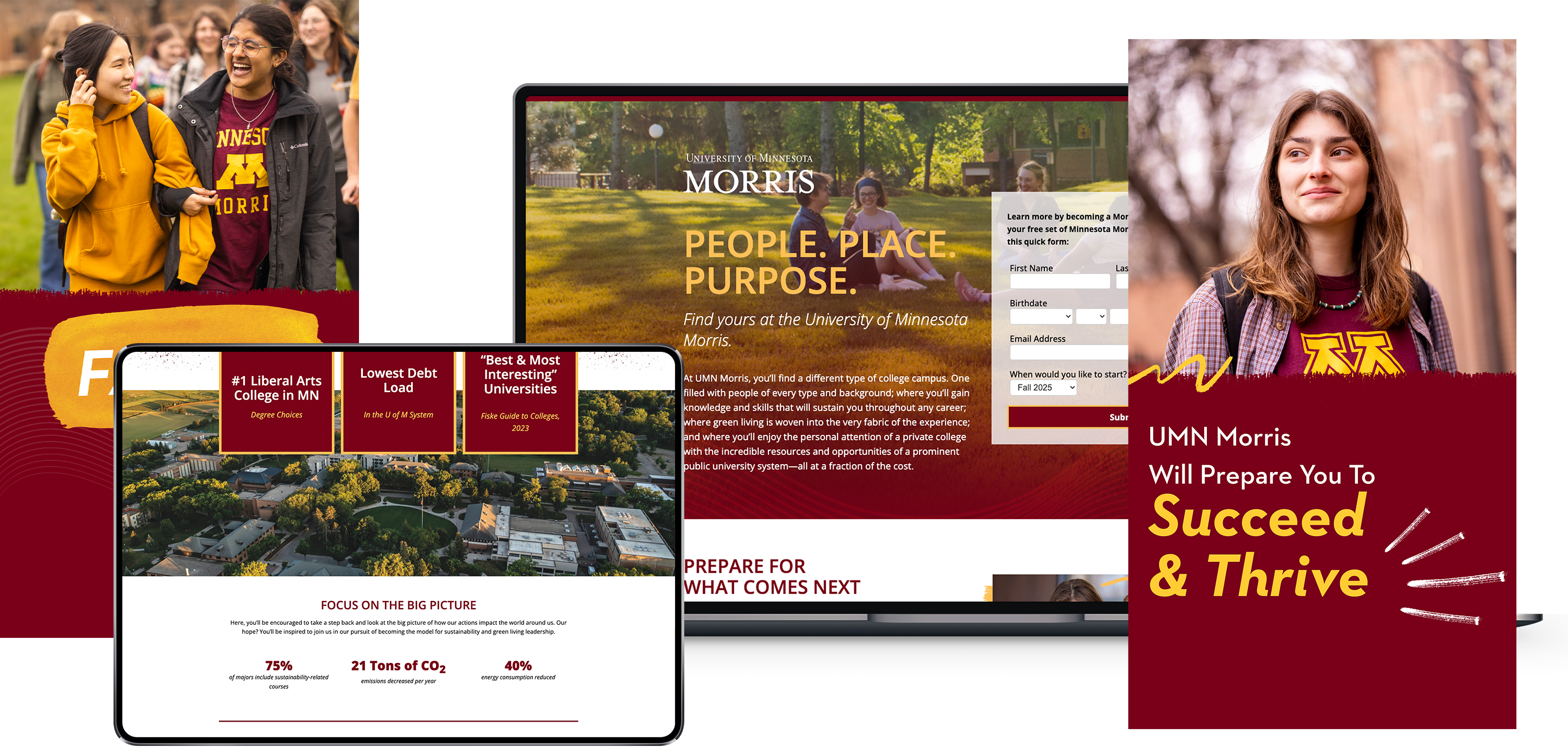
University of Minnesota Morris
Entry Win: Silver
Entry Title: Digital Media
Category: Digital Advertising
Manhattan University
Entry Win: Bronze
Entry Title: Temporary Website
Category: Admissions Website or Microsite
Virginia Military Institute
Entery Win: Bronze
Entry Title: Senior Recruitment Campaign
Category: Social Media Content – Campaign
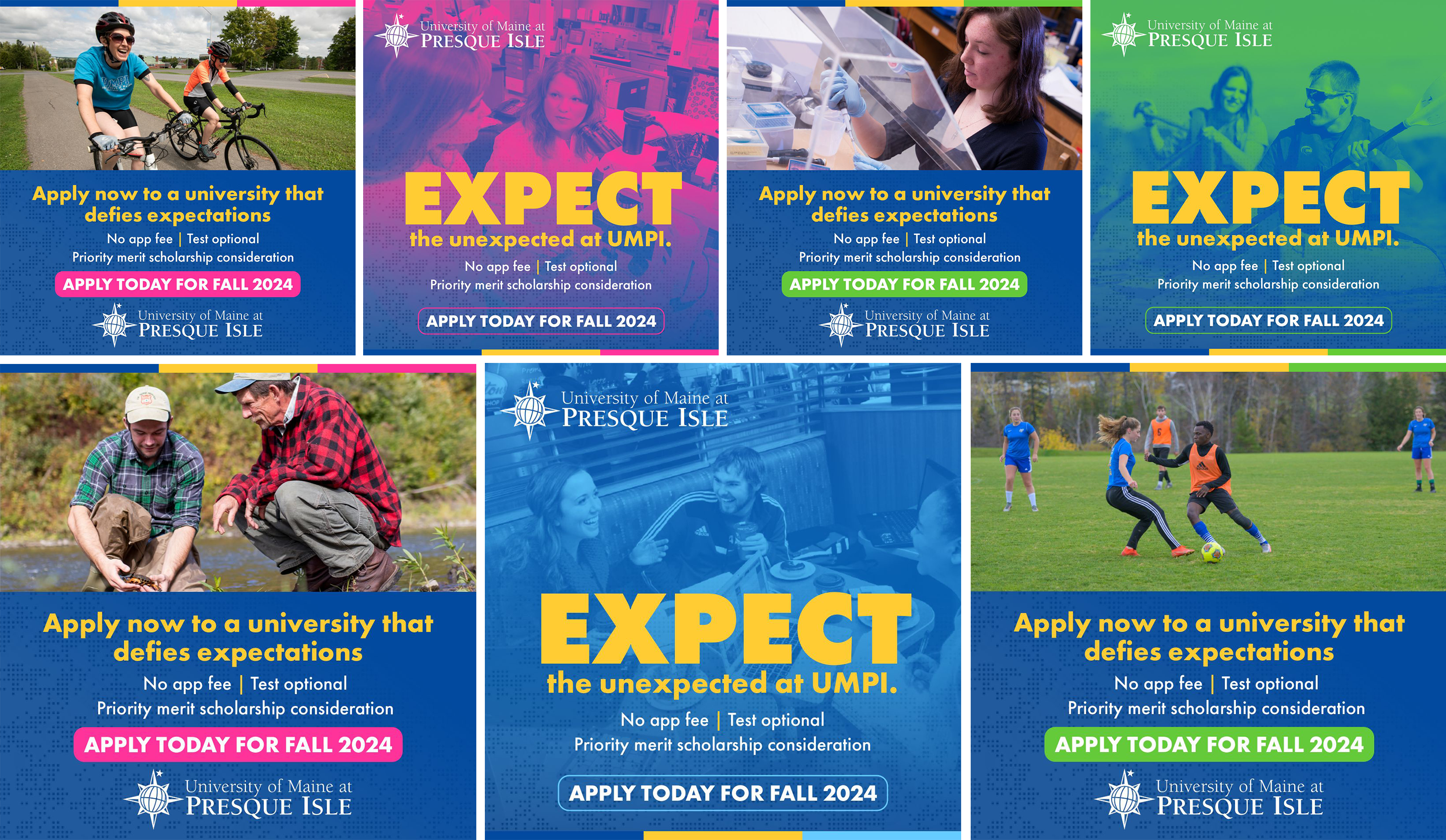
University of Maine Presque Isle
Entry Win: Bronze
Entry Title: Digital Media
Category: Digital Advertising
If you’d like to learn how Spark451’s award-winning team can help your institution gain a competitive edge, reach out today.
Graduate School Decisions: What Drives Students to Take the Leap
You already know graduate school is a perennially attractive option for students seeking additional credentials, career advancement, or a career change. However, evolving technological habits and other factors can reshape what prospective students expect from their graduate school experience.
In our recent webinar, Director of Client Strategy Meryl McDonough and Associate Client Strategist Jenna Shipley released the findings of Spark451’s latest Graduate School Intenders Survey, which features feedback from more than 1,000 recent college graduates.
Watch the recording to gain insights about:
- Which factors students value most when assessing grad programs
- Students’ communication preferences and social media habits
- Respondents’ employment status
- Delivery format preferences
- And so much more!
You’ll also have the opportunity to download the full report!
TikTok’s Future Delayed
In an era where digital platforms shape countless decisions, TikTok remains a dominant force, captivating millions worldwide. While a U.S. ban loomed — and the app even went dark overnight for 14 hours on January 18th — sending shockwaves and outcry from millions, an executive order has postponed any restrictions for 75 days, granting higher education institutions more time to leverage the platform’s marketing potential. The show of support and fevered loyalty toward the app shows how influential TikTok is as a tool in higher education marketing.
For now, TikTok offers a valuable opportunity to connect with prospective students from Gen Z and Gen Alpha. Here’s how colleges and universities can maximize TikTok’s influence to enhance recruitment and engagement efforts during this extended window.
TikTok’s unparalleled reach, vibrant content culture, and robust analytics tools provide a proven blueprint for engaging Gen Z and Gen Alpha.
TikTok: A Gateway to Engaging Gen Z and Gen Alpha
TikTok’s rapid growth, particularly among younger audiences in the U.S. — 41% of its users are aged 16 to 24 — makes it an excellent marketing platform for colleges and universities. But it’s not just about the numbers; TikTok thrives on vibrant, immersive content that fosters deep engagement. Prospective students from Gen Z and Gen Alpha aren’t merely passive viewers, they’re active participants spending an average of 9.31 hours per week on the platform. This makes TikTok a prime tool for driving event registrations, generating leads, and building meaningful connections.
Best Practices for Enhancing Visibility and Engagement
Showcasing campus life, academic programs, and student experiences helps colleges attract a broad range of prospective applicants. To create standout content on TikTok, a mix of creativity, strategy, and execution is key. Here are some effective strategies:
- Day-in-the-Life Videos: TikTok thrives on creativity and authenticity, urging educational marketers to craft campaigns that connect with students. Our partners stand out by using TikTok to share real student stories, campus events, and daily college life. These videos offer genuine snapshots into student life, helping prospective students connect emotionally with the institution and envision themselves as part of the community.
- Highlight Unique Aspects: Showcase the elements that make a campus unique—renowned faculty, cutting-edge research facilities, or dynamic student life activities—to differentiate the institution.
- Leverage Challenges and Trends: Participating in challenges or trends can boost visibility, especially when tailored to educational themes or campus life. TikTok’s algorithm amplifies engaging content, increasing the likelihood of ads going viral and expanding reach for branding campaigns.
- Collaborate with Influencers: Student influencers and alumni lend credibility and authenticity. Influencers viewed as peers can more effectively persuade and engage prospective students from both generations.
- Optimize Calls-to-Action: Strong, clear calls-to-action are essential for encouraging prospective students to explore the institution, visit virtually or in person, or apply. Investing in TikTok reaches a highly engaged audience, driving recruitment and event results. TikTok’s analytics offer key insights into performance, helping marketers refine strategies, optimize resources, and adapt to audience preferences in real time.
TikTok’s Continued Lessons for Higher Education Marketing
Despite the uncertainty surrounding TikTok’s future, it remains a goldmine of opportunities for higher education marketers. The unwavering support and dedication from TikTok’s loyal user base reinforce its undeniable value as a platform for meaningful engagement in higher education marketing. Its unparalleled reach, vibrant content culture, and robust analytics tools provide a proven blueprint for engaging Gen Z and Gen Alpha. The 75-day postponement offers a chance to double down on your TikTok strategy. By crafting compelling narratives that resonate with prospective students, institutions can maximize visibility and build lasting connections.
As the future of TikTok in the U.S. remains uncertain, now is the time to make the most of its marketing potential. The digital media strategists at Spark451 are here to help you navigate this dynamic platform, refine your tactics and approach, and achieve your goals. With a forward-thinking approach, we’ll ensure your institution stands out and remains competitive in the evolving digital landscape. Reach out today to get started.
Dive into January
Welcome back! January is a busy month, but luckily, we get to stay indoors with fewer on-campus events and visits this time of year. So, sit back, get cozy, warm up a beverage of your choice, fire up your CRM, and crank through the work ahead.
To get you started, we’ve outlined a few actionable tips to help you streamline your processes, personalize your outreach, and make the most of the tools at your disposal. Something tells us this will be your best year yet!
Application Review
It’s application and essay reading time! Get yourself and your team ready for the assortment of deadlines that comes with this time of year. From internal deadlines to the all-important regular decision deadline, does your team have what it needs to tackle the tasks at hand? Here are a few tips that may help:
- Have you sent reminder emails to students with missing materials? Don’t let missing materials hold up your application review! Even if your campus hasn’t started the spring semester yet, high school students are probably back in school and admissions counselors can follow up with a phone call or text to get those materials in.
- How does your duplicate record count look? Make sure your team is merging duplicate records, whether they are inquiries or applicants. (Slate users: Visit Consolidate Records. Element451 users: See the Deduplication Module.)
- Are you following up with students who started an application, but haven’t submitted it? Don’t let your institution fall off their radar!
Pro Tip: In your CRM, get checklists prepared and tested well ahead of time. That means properly configuring materials and testing checklist functionality before the arrival of student résumés, recommendation letters, and transcripts.
Interviews
If your institution conducts student interviews, you know the drill — schedule, interview, repeat! Whether these interviews are in-person or virtual, leverage your CRM to schedule these conversations. In your CRM, log notes on student records and make it so that any admissions counselor can quickly find your notetaking later.
Food for Thought: Add a personal touch when following up with students. Did you learn they were going to a band competition or competing in a state basketball tournament? That could be a meaningful personalization to mention in your communications with them!
Yield Management
It’s time to start converting admitted students into enrolled students for the fall. Plan how your team will be organizing admitted student events in your CRM. Here are a few questions to consider:
- Do you need any new templates built?
- How are your event communications looking?
- Do you want visit reports that show year-over-year goal progress from this year to last?
- Where is your admitted student checklist?
- Are the forms you’ll be asking students to complete accessible and easy to navigate?
- Do you have a plan in place for recruiting dual enrollment students?
Food for Thought: How eye-catching are your reports? Some color, visual illustrations, and interactive elements are sure to impress every member of your team.
Financial Aid
There’s no better time than now to get financial aid packages prepared and proofread. This holds especially true if your institution has early deadlines or priority deadlines for submitting the FAFSA. Get ahead now and enter the spring term with less stress than last year!
Applicant Questions
No matter how perfect your website, pamphlets, FAQ documents, and information sessions are, students and parents will have many questions. How will you be triaging these types of questions this year?
We have some creative solutions in mind. Let us help you optimize your inbox configurations. Reach out to learn more!
Let's Cross the Finish Line Together. 🏁
Need a hand? With our flexible SparkAssist service, you can learn with us and become an expert on all things Salesforce, Slate, and Element451. Or, hand us a project for one-time completion. No project is too small or large for us!
- Drip campaigns development and automation
- Responsive HTML email templates
- Querying and reporting
- Database efficiencies
- Lead generation and strategizing origin sources
If you’re interested in learning about Spark451’s SparkAssist options, please reach out to us!
Harness the Power of Sophomore/Junior Search
Working in higher education right now can feel like the floor is lava and you’re not sure where to stand. With institutions rethinking pricing strategy, an increase in faculty and student burnout causing schools to refocus on supporting the mental and physical health of their communities, and outdated marketing materials that don’t match updated brands, it’s time to rethink how you plan to communicate with a new crop of eager young minds.
It All Begins With an Effective Sophomore/Junior Search
In our recent College-Bound Student Survey for the Class of 2028, 60% of students indicated that they began to look seriously at college before the summer entering their senior year.
Building early brand awareness is the foundation upon which you can expand your funnel and attract a wider pool. Being familiar with your institution is a prerequisite for students’ curiosity: When surveyed, almost 40% of the Class of 2028 said they would not open an email from a college if they had never heard of it. So, how can you make sure they’ve heard of your institution — and know how to feel about it?
60%
of students indicated that they began to look seriously at college before the summer entering their senior year.
40%
of the Class of 2028 said they would not open an email from a college if they had never heard of it.
Step 1: Figure Out With Whom You'd Like to Connect
What kind of students do you want to enroll? Where are they? What are their interests? Answering these questions might seem like a daunting task, but using tools like Spark451’s Purchase Modeling and Predictive Modeling can help you prioritize where to invest your budgets and efforts. By analyzing your institution’s historical data and comparing it with national enrollment trends, we can help you make a strategic name purchase, and then, assign a score to those names ranking the likelihood of their enrollment.
Step 2: Plan for Where You'll Reach Them
Multi-channel communication plans are the most effective tools for building brand awareness. To start, introducing yourself through digital media is an excellent way to gain passive engagement. Having a presence on Instagram, TikTok, and Snapchat — or even better, running ads on these channels — is an excellent way to be noticed and remembered.
Of course, email will be the primary vehicle to tell the story of your institution and what it has to offer. 98% of students noted that they used email for their communication during their college search, with mailed materials (68%) and texting (65%) coming in as the next most popular channels. Reflective of this, students ranked email as their preferred communication method, with traditional mail coming in second and texting coming in third. (Also, 37% of respondents noted they were OK with receiving texts anytime!)
Once you’ve established which channels you’re going to cover, it’s time to lean on your admissions counselors. High school visits and college fairs are the best time to connect with sophomores and juniors in their natural habitat. To get the most out of those visits, pair data insights from your communications with the student names you purchased (and potentially scored) to get a better idea of where your team should be traveling. And don’t forget to equip your counselors with a list of students from each school who have received and/or engaged with your communications. Doing so will help them make personalized connections and leave a good impression on the students you’re looking to recruit — a recipe for success! (When was the last time you updated your giveaway and travel materials? We can help with that, too! Read more about that here.)
Another way to build relationships is to offer specific on-campus visit opportunities for sophomores and juniors. After all, 28% of the students we surveyed indicated that they knew their chosen school was right for them upon visiting campus, so any way you can get students to your campus will likely result in a boost in enrollment. A “Tips for College Admissions” workshop could be a great way to garner interest from sophomores and their parents/guardians. For juniors, focusing more on your campus, scholarships, academic opportunities, etc. may be more appropriate.
Step 3: Determine How to Engage Them
Our College-Bound Survey indicated that 27% of students did not click through an email from a college if it was too generic. Digital natives know you have data on them, and they want it used to serve their needs. While keeping branded information simple and clear is important, adding personalization makes your message relevant to your audience. This is the Instagram/TikTok generation, where everyone has their own page, their own individualized timeline, and uniqueness is often celebrated. Leveraging segmentation and personalized messaging is a great way to show these students you not only know what they want, but you can offer it. Make sure you’re talking to them as individuals so they feel that any email, text, or postcard you’ve sent was truly meant for them — it can really make all the difference!
Once you’ve managed to capture their attention, providing easy ways for them to indicate their interest is very important! Make sure you have a user-friendly lead form that is easily accessible in all of your communication channels and has been optimized for mobile.
Step 4: Engage Stakeholders
We know parents/guardians are a huge factor in a student’s college search, with 87% of surveyed students indicating that their families had an impact on their college decisions. Engaging parents/guardians through their own specific campaigns (separate from their students) is a very effective way to build brand recognition and establish relationships with these key influencers. Tailoring these messages to make them feel personalized is paramount, as the way you’d engage with a first-generation family may sound very different than how you might speak with a parent who is an alum, for example.
At Spark451, we have the ability to append parent/guardian data to purchased names, making it easy to include them in your communication plans. Remember, if students and their families feel that your school genuinely cares about them and their academic future, they’re going to be more likely to enroll.
In a nutshell, running a successful sophomore/junior search comes down to playing a strategic long-game in a thoughtful way. We know there are plenty of students who would be a great match for your institution — the challenge is finding them early enough in the process so that they are excited when it comes time to apply.
To discuss the details of your college or university’s sophomore/junior search further, please reach out. We’ll be happy to help you refine your strategy and deliver a campaign that will support your goals. Trust us: Future you will thank you!
Now That You’re Off the Road…
Now that travel season has come to an end, it’s time to turn your focus to the next steps in the admissions cycle. December is a crucial month for setting the stage for a successful spring and beyond, so we’ve put together a list of key tasks and reminders to help keep you — and your CRM — on track:
1. Send Holiday Cards
Sending holiday cards to prospective students and their families is not only thoughtful, but a great way for your school to stay top-of-mind. Use your CRM to curate a list of top-engaged students for your recipient list, then, assign tasks to your counselors (or even print to card using services like Slate Print). This personal touch can make a significant impact and shows that you care about the student’s journey.
Food for Thought: Have you set up a parent drip campaign yet? If not, December is a great time to get started so it’s ready to roll before yield season kicks into high gear!
2. Prepare Your Yield Communications
Get ready to implement yield campaigns over the coming months to nurture your admitted students. Regular, personalized communications will help keep them engaged and excited about attending your institution, and consistent reminders about next steps will help move your admit pool through the funnel.
Take advantage of portals and microsites by using them to house additional information and action items that future students need to complete in order to deposit and enroll. Then, be sure to link to them in your communications to grow engagement metrics! You can even create reports to help your team visualize metrics and track which campaigns were most successful.
Pro Tip: Need help? The Spark451 team has extensive experience building and populating customized portals and microsites. Reach out today!
3. Plan Your Spring Yield Events
It’s never too early to start developing your spring yield events! Begin by refining your recipient list within your CRM, then, determine how many email and SMS reminders you want to send (don’t forget to preview all of them!). These events are critical for converting admitted students into enrolled students, so be sure to create them ahead of time so they can be reviewed internally before going live. Remember, the more prepared you are, the smoother these events will run.
Food for Thought: Speaking of spring… if you use Slate and haven’t already implemented Voyager, now is a good time to start trying out its features in preparation for spring travel.
4. National Student Clearinghouse Import
A new source format for the National Student Clearinghouse was recently released in Slate, so now it’s time to automate the import. Remember, the quicker student’s transcripts are imported to your CRM, the quicker your team can process them.
5. Slate.org Setup
If you’re a Slate user, a quick check to make sure you’re displaying the correct round and decisions could save your office staff a lot of time. Don’t have Slate.org configured? Reach out to us for help!
6. Test New Features
Now is the perfect time to test out any new functionalities your institution will be rolling out. Take advantage of your test environment and test records to ensure everything is working as expected. Spending a little more time on testing can save you a lot of headaches later.
7. Make Your New Year’s CRM Resolutions
In addition to your personal New Year’s resolutions, set some CRM New Year’s resolutions for you and your team. By focusing on these tasks, you’ll be well-prepared for the upcoming months and ready to support your students in making one of the most important decisions of their lives.
Ensuring your workspace is clean and organized is just as important as your CRM being clean and organized! Take some time clearing your desktop, downloads folder, shared cloud storage, and physical workspace. It’ll make coming back to the office in the new year much more enjoyable. Most importantly, remember to take a moment to celebrate your team’s successes this month! Recognizing and appreciating the hard work of your colleagues goes a long way towards fostering a positive and motivated work environment.
Let's Cross the Finish Line Together. 🏁
Need a hand? With our flexible SparkAssist service, you can learn with us and become an expert on all things Salesforce, Slate, and Element451. Or, hand us a project for one-time completion. No project is too small or large for us!
- Drip campaigns development and automation
- Responsive HTML email templates
- Querying and reporting
- Database efficiencies
- Lead generation and strategizing origin sources
If you’re interested in learning about Spark451’s SparkAssist options, please reach out to us!

